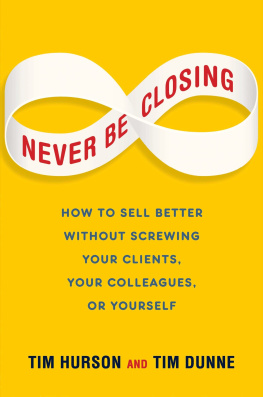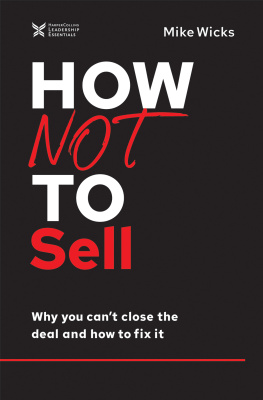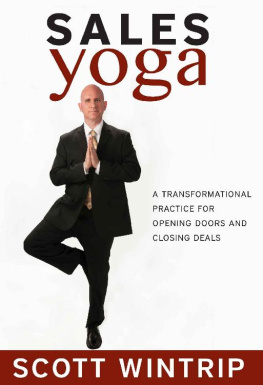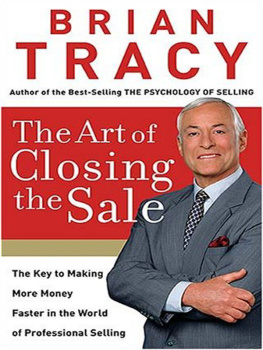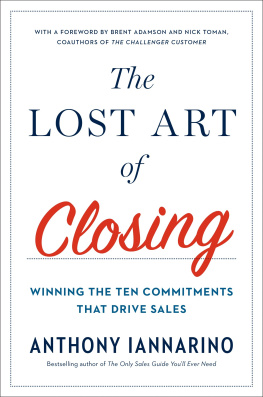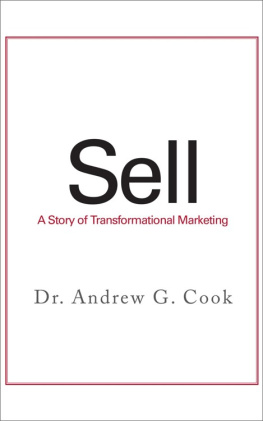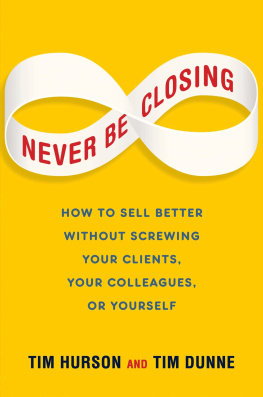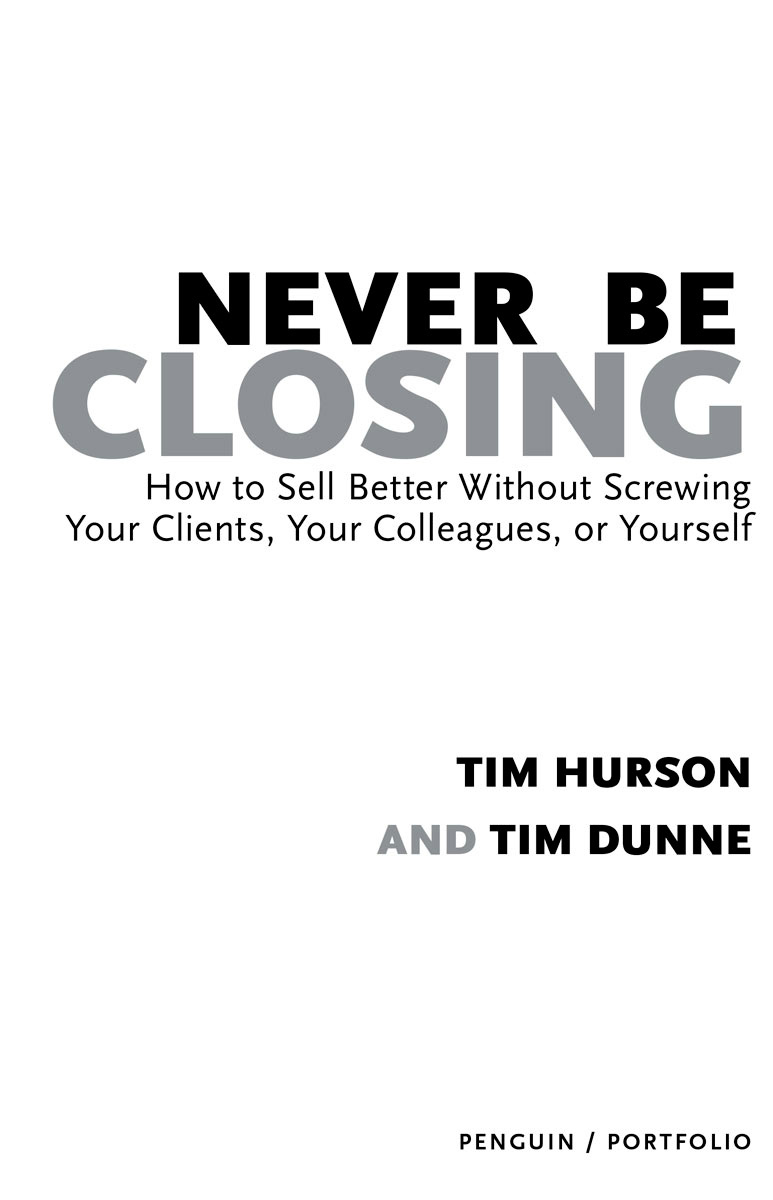USA | Canada | UK | Ireland | Australia | New Zealand | India | South Africa | China
Penguin supports copyright. Copyright fuels creativity, encourages diverse voices, promotes free speech, and creates a vibrant culture. Thank you for buying an authorized edition of this book and for complying with copyright laws by not reproducing, scanning, or distributing any part of it in any form without permission. You are supporting writers and allowing Penguin to continue to publish books for every reader.
Hurson, Tim.
Never be closing : how to sell better without screwing your clients, your colleagues, or yourself / Tim Hurson and Tim Dunne.
Includes index.
1. Selling. 2. Thought and thinking. I. Dunne, Timothy, 1965 II. Title.
CHAPTER 1
A Stranger Comes to TownWhy We Sell
All literature is one of two stories: a man goes on a journey or a stranger comes to town.
Leo Tolstoy
I magine how life must have been for early humans. They lived in close family groups, probably quite small in size. Because everyone knew everyone else, people wouldnt have much need for selling skills. Within a community, property was likely shared. Exchanging use of this or that item was easy and clear. You knew your neighbors character, skills, strengths and weaknesses, likes and dislikes, and needswhich were pretty much the same as yours.
Nobody really had to sell anything to anyone else.
But then something new happened. One day, a stranger came to town. Your familys first reaction might have been to drive him off, maybe even kill him. After all, who knew what ills an outsider might bring?
But the stranger had something you had never seen before, something to tradeperhaps a tool, a trinket, a particularly well-crafted hunting stick. Suddenly the dynamic changed. You realized there might, after all, be a reason to welcome the stranger, albeit warily.
Its not unlikely that thats how the first sales scenario unfolded.
Of course, the stranger would have had to convince you of several things:
First, that his hunting sticks would be good for you in some way, that they would do what he indicated they would do, that he could be relied on to tell the truth. Ideally, he would demonstrate that he and his products were useful.
Second, that his offer was worth whatever he wanted in return. If the stranger wanted that hand ax you had worked so hard to make, he would have had to propose a trade you would see as advantageous.
If your brother or your neighbor needed to persuade you of something, he would rely on his reputation. But the stranger doesnt have the advantage of reputation or status. He would have to find a way to sell you on his proposition.
Not much has changed since our imagined stranger came to town and offered to trade his hunting sticks for your hand ax.
I f you sell, and if you aim to sell better, you need to know about the strangers dilemma.
A stranger doesnt have the leverage of instant credibility. So its not surprising that a wide range of sales tactics, tools, and closing techniques have been developed as a substitute for credibility. Their purpose is often to wrangle out a commitment to buy, even when buying may not be in the best interests of the client.
The Productive Selling approach we advocate in this book and the courses we teach are designed to overcome the strangers dilemma, but in a very different way. Productive Selling isnt just a catalog of techniques to wrestle money out of a clients pocket. Its a comprehensive strategy that starts with a well-researched process for identifying and solving problems. In our story of prehistoric sticks and stones, the fundamental reason you and the stranger were able to make an exchange was that each of you solved a problem for the otheryou saw value in the strangers hunting sticks, and he saw value in your hand ax. At its essence, Productive Selling is about helping people solve problems. It focuses the power of a deliberate problem-solving process to help people. It shows you how to access your creativity to establish and maintain relationships that will be truly useful for both you and your clients over time. In a very real sense, this book will show you how to become less of a stranger to your clients. So you can sell better.
B efore we start, its important to make note of the other side of Tolstoys observationthe second basic story in literature is that a person goes on a journey.
Tolstoy could have simplified his analysis even more: a stranger comes to town and a person goes on a journey are really the same storyjust told from different points of view.
If every client sees the salesperson as the stranger who may or may not be worthy of trust, then every person who sells is that same stranger on a journeyhaving to prove himself to new people, in new places, with new challenges.
So welcome, stranger. This book is aboutand foryou. Its our privilege to take you on a rewarding journey, one that we hope will open your eyes to a new and better way of selling, and that will benefit both you and those you encounter along the way.
CHAPTER 2
Think About ItThink Better to Sell Better
Creative thinking may simply mean the realization that theres no particular virtue in doing things the way they have always been done.
Rudolph Flesch
S ome years ago, we ran an innovation program for the executive team of a large printing firm. The next week, we debriefed with the CEO, a man named Bert. Hed been a semipro fullback before getting into business, and his leadership style was still to run straight up the middle. Bert said, That was the best sales training Ive ever seen. My sales guys need that.
Berts communication style was so direct that it was sometimes hard to tell if he was being serious. You want your salespeople to take our innovation program?
Nah, they wouldnt sit still for it. But its the way you guys think. The problem-solving part. They could use that. Its good. Put something together. Short.
The conversation clicked over to Berts need to plan for his board meeting. In five minutes the meeting was over. That was Bert.
Later, in our own debrief, we started thinking about Berts reaction to our program. Wed been offering Productive Thinking and creative problem-solving services to organizations large and small, at home and abroad, for much of our working lives. Wed applied the process successfully to innovation projects, strategic initiatives, new product development, marketing, conflict resolution, and even political campaigns. Productive Thinking was so much a part of us that we naturally applied it to our own sales efforts, but it never occurred to us to tailor it specifically to the sales process and offer it to our customers. Bert had seen the relationship in an instant.

